#Franco Scaglione
Text
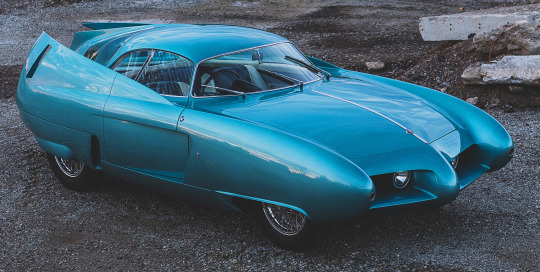



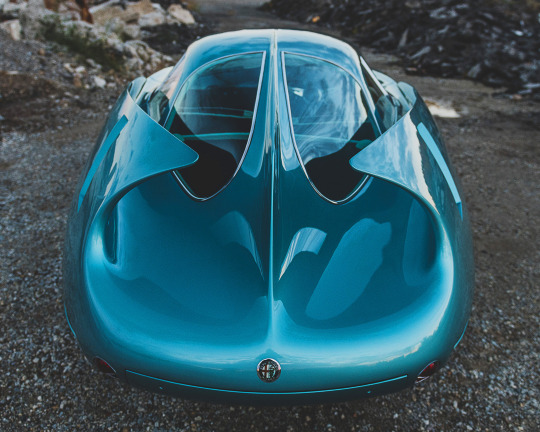
Alfa Romeo B.A.T. 7, 1954, by Bertone. One of a series of Berlina Aerodinamica Tecnica concepts designed by Franco Scaglione. Nuccio Bertone also added ideas from his experience working on wing profiles in the aeronautical industry resulting in the shape of the large, curved tail fins. The car's drag coefficient was 0.19, still impressively low, for the time, revolutionary.

#Alfa Romeo#Alfa Romeo B.A.T. 7#concept#design study#Bertone#aerodynamic#Franco Scaglione#experimental car#1954#1950s#tail fins#retro futuristic#futuristic
1K notes
·
View notes
Text
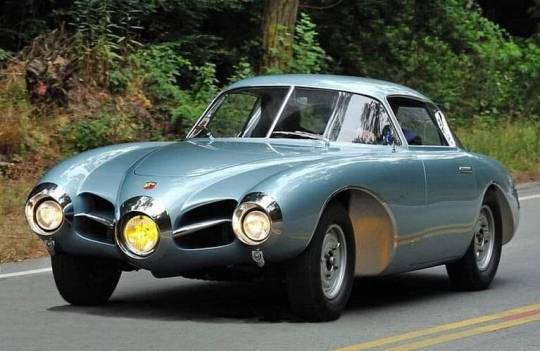
Abarth 1500 Biposto Coupé conçu par Franco Scaglione pour Bertone en 1952. - source Auction Bay Kenya.
73 notes
·
View notes
Photo




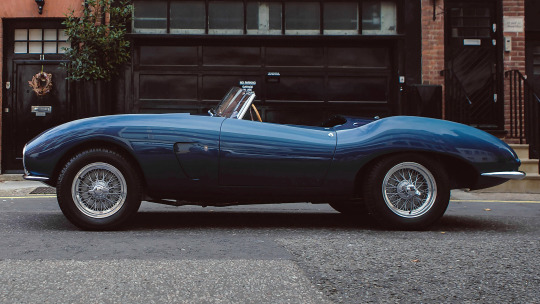


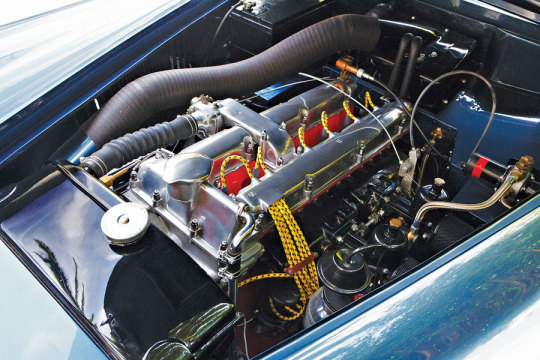
Aston Martin DB2/4 Bertone Spider (1 of 3).
In 1953, Stanley Arnolt purchased five sequential Aston Martin DB2/4 chassis and sent them to Carrozzeria Bertone to be fitted with custom coachwork. While the even-numbered chassis were fitted with opulent, luxurious bodies, 503, 505, and 507 were fitted with a distinctive sporting design penned by one of the most talented and prolific designers of the 1950s and 1960s, Franco Scaglione.Scaglione’s credits include the incomparable Alfa Romeo B.A.T. cars, the Siata 208 CS coupe, the Abarth Porsche, the Alfa Romeo Tipo 33 Stradale, and a wide variety of one-offs and important production cars.Of the three chassis fitted with this body, two were designed for outright competition use and were minimally equipped for the purpose; the third, this car, LML505, was a more luxurious example equipped with a full windscreen, intricate grille, bumpers, a lavishly appointed interior with unique features, and full soft top.Arnolt showed the suitably opulent LML505 at the 1954 New York Auto Show, where it was fitted with an Aston Martin badge in an attempt to seduce company owner David Brown into making the Bertone-bodied roadster an Aston Martin production model. The gesture obviously left its mark, with Aston Martin taking almost five years to catch on. Arnolt lived just long enough to see the Italian firms Touring and Zagato being used to turn out some of the most competitive Aston race cars of the early 1960s.
#Aston Martin DB2/4 Bertone Spider#Carrozzeria Bertone#Franco Scaglione#Alfa Romeo B.A.T#Siata 208 CS#Abarth Porsche#Alfa Romeo Tipo 33 Stradale
144 notes
·
View notes
Text
Lamborghini: Los hombres que convirtieron a la marca en una leyenda
Desde Ferruccio Lamborghini, su fundador; hasta el piloto Bob Wallace, pasando por Giampaolo Dallara, Paolo Stanzani, Franco Scaglione y Giulio Alfieri.
Desde sus inicios en 1963, Automobili Lamborghini siempre se ha destacado como una empresa altamente innovadora y pionera. Todo esto se debe, principalmente, a una serie de ingenieros, técnicos de producción e innovadores que utilizaron su valentía y espíritu visionario para dar forma a la marca del Toro, convirtiéndola en uno de los nombres más prestigiosos y legendarios en la historia…
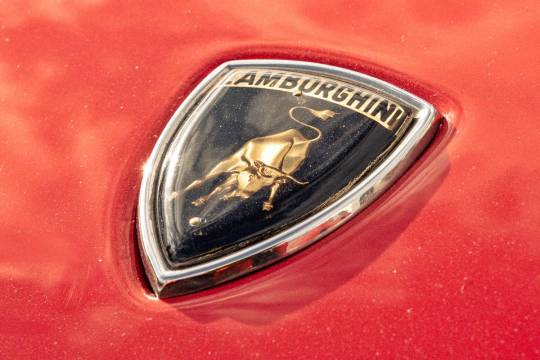
View On WordPress
#Bob Wallace#Ferruccio Lamborghini#Franco Scaglione#Giampaolo Dallara#Giulio Alfieri#Lamborghini#Paolo Stanzani
0 notes
Text



This 1957 Jaguar XK 150S Bertone was designed by the Franco Scaglione. This is the only surviving car of the three made by Bertone. Each was slightly different. The design was considered for a replacement to the XK 150 before the E-Type arrived.
28 notes
·
View notes
Text

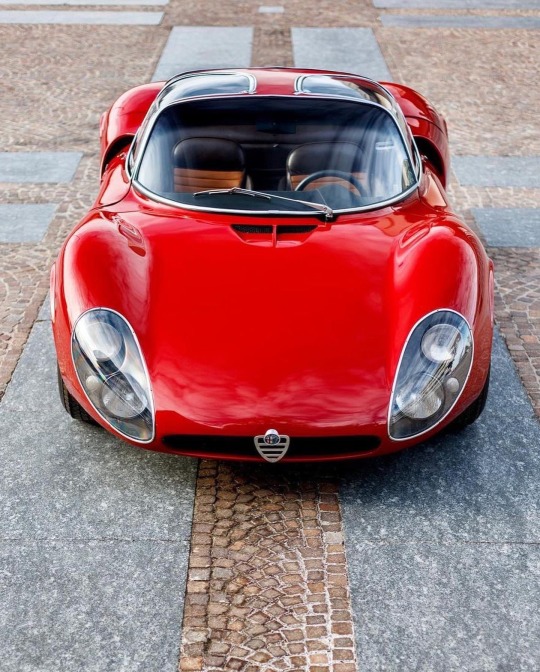


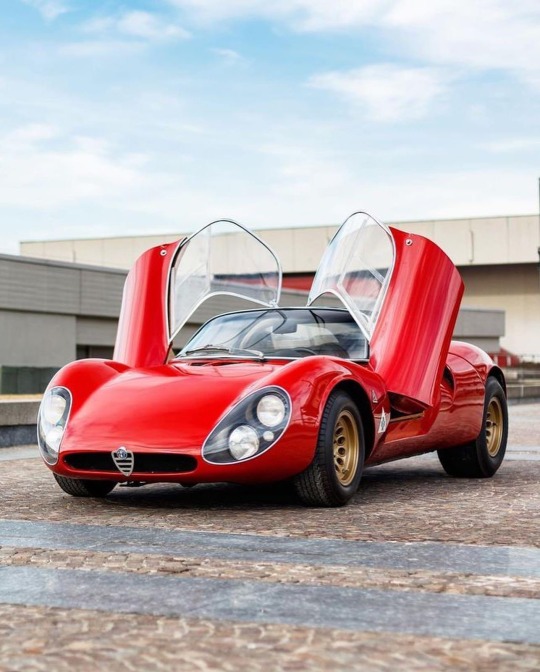



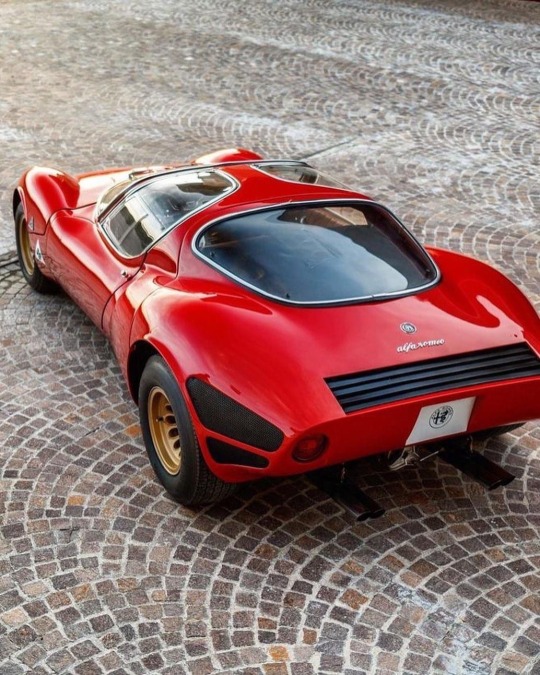

Franco Scaglione masterpiece, Alfa Romeo 33 Stradale.
37 notes
·
View notes
Text

1963 Lamborghini 350 GTV






As released at the 1963 Turin Auto Show, the 350 GTV must have stirred much attention. Not until the release of this car, Lamborghini was only manufacturing premium tractors and the GTV offer had a striking new body design by Franco Scaglione.
#lamborghini#1960s#italian#made in italy#italy#classic cars#italian style#la dolce vita#italian cars
10 notes
·
View notes
Text
Lamborghini 350 GT returns to Geneva 60 years after its debut
In March 1964, Automobili Lamborghini was still in its infancy. Established just a few months previously, it had presented its first prototype in October 1963, known as the 350 GTV and designed by Franco Scaglione and built at Carrozzeria Sargiotto in Turin. The production car, derived from that first prototype (which remained a one-off), was the 350 GT, presented at the Geneva Motor Show in…

View On WordPress
#automobile history#automotive#automotive heritage#automotive history#automotive lifestyle#lifestyle#Press release
0 notes
Text
0 notes
Text




Siata 208 Corsa Spider, 1952, by Bertone. A one-off racing car designed by Franco Scaglione powered by Fiat's 8V engine that was kept by Nuccio Bertone for his own use
#Siata#Siata 208 Corsa Spider#Siata 208#Bertone#one-off#V8#Fiat 8V#Franco Scaglione#Nuccio Bertone#design study#1952#1950s
189 notes
·
View notes
Text

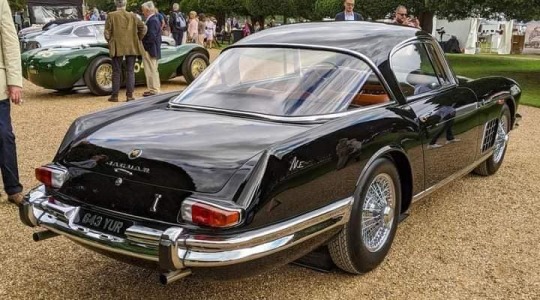

Jaguar XK 150S 1957 Bertone design Franco Scaglione. - source Bob Kauffman via World Cars from the 1930s to 1980s
80 notes
·
View notes
Text
Bertone returns with the GB110 supercar
Bertone returns with the GB110 supercar
The rebirth of a flagship
Founded in 1912 in Turin, the Carrozzeria Bertone is one of the greatest incarnations of Italian automotive design, a company through which great masters such as Giorgetto Giugiaro, Marcello Gandini and Franco Scaglione have passed. Listing all the cars designed by Bertone would take a long, long time, but we cannot forget the countless icons such as the Alfa Romeo…

View On WordPress
0 notes
Text
Lamborghini 350 GT: La historia detrás del modelo que inició la leyenda
Presentado por Salón del Automóvil de Ginebra de 1964 se destacaba tanto por su rendimiento como por su diseño vanguardista.
En marzo de 1964, Automobili Lamborghini estaba aún en sus comienzos. Fundada apenas unos meses antes, había presentado su primer prototipo en octubre de 1963, conocido como 350 GTV, diseñado por Franco Scaglione y construido en la Carrozzeria Sargiotto de Turín. El coche de producción derivado de ese primer prototipo fue el Lamborghini 350 GT, presentado en el Salón del Automóvil de Ginebra en…

View On WordPress
0 notes
Text
Bellagio, inaugurazione della mostra "Congiunti"

Bellagio, inaugurazione della mostra "Congiunti".
Il famoso intellettuale Daniele Radini Tedeschi è arrivato questa mattina a Lecco accompagnato dal vice rettore dell’Accademia e dal professor Ronchi, per visitare Palazzo Belgioioso e il Museo del Risorgimento. Ad aspettarlo una gran numero di appassionati e giovani: "Queste zone -ha dichiarato lo studioso- sono ricche di cultura e meritano di essere valorizzate; a Lecco ci sono opere attribuite a Ceruti, Cerano e van Ostade, mentre entro i due rami del lago di Como, in quella perla che risponde al nome di Bellagio possiamo ammirare meraviglie quali la chiesa di San Giacomo, Villa Melzi e Villa Serbelloni. Sono convinto –
prosegue il critico – che il triangolo Lariano diventerà una regione d’arte, le amministrazioni spero siano pronte ad accogliere questo progetto".
Sarà lui inoltre ad aprire la seconda tappa espositiva del progetto "Congiunti". Infatti a partire dal 15 Ottobre fino al 25 la Torre delle Arti di Bellagio ospiterà la rassegna presentando una rosa di artisti internazionali, scelti nel panorama contemporaneo, trattati nell’omonima pubblicazione a marchio Giunti editore. L’iniziativa, che in tal caso ha il patrocinio del Comune, è concepita come un susseguirsi di riflessioni e confronti tra un artista del passato e uno vivente, accomunati da affinità, citazioni, legami, divergenze oltre il tempo e lo spazio.
L’arte, nell’ambito di un percorso di ispirazioni e rimandi, ha spesso sovrapposto la tradizione all’innovazione; allo stesso modo il progetto, articolato in diverse mostre - di cui la precedente al Castello Sforzesco Visconteo di Novara - e in una pubblicazione, andrà a suggerire quelle opere che, nonostante un linguaggio attuale, siano foriere di valori di bellezza universalmente validi. Autorevoli progenitori - in pittura, scultura e fotografia- troveranno nuovi eredi in alcuni maestri di oggi; un avvicinamento tra passato e presente in cui si possono riconoscere quelli che Francesco Arcangeli chiamava “tramandi”, ovvero lunghi fili che collegano ad esempio le opere di Mondrian a Piero della Francesca, quelle di Wiligelmo a Pollock o i lavori di Cimabue a Morandi. Ecco allora che l��idea di “classico” non viene più intesa come valore immutabile a cui ancorarsi per contrastare la fluidità del presente, bensì come punto di partenza, di riflessione e fondamento per la creazione di nuove forme estetiche e contenuti. Seguendo questo indirizzo l’arte della tradizione non sarà più associata a un mondo ideale e senza tempo, bensì rimodellata alla luce del presente e delle sue tematiche
pressanti, come multiculturalità, questione identitaria, il rapporto con la memoria storica del Novecento e la ricerca di modelli di sviluppo sostenibili.
Il risultato delle mostre sarà registrato nel volume "Congiunti", in uscita a conclusione dell’anno dalla storica casa editrice. Tra gli enti coinvolti nel progetto anche il College International de Cannes, fondato nel 1931 dall’intellettuale Paul Valéry, ente di ricerca e studio che ha ospitato a Maggio la presentazione dell’intero evento.
Con opere di Agarla Matteo, Ancilotto Camilla, Bachiocco Piera, Carletti Franco, Comand Patrizia, Corso
Cecilia, Depaoli Gianni, Dupont Josine, Fera Emanuela, Fusari Giuliana Maria (Maddalena), Gaggio Paola, Gentile Lena, Gonzales Alba, Irosa Guido, Landolfi Silvana, Legnazzi Barbara, Longhitano Laura, Marin Federica, Minutolo Mario, Moiso Carla, Montalto Adriana, Perin Juri, Pezzino de Geronimo Rossella, Prato Tiziana, Premoli Lorena, Pucci Osvalda, Rossetto Paolo, Scaglione Antonella, Serpetti Alessio, Toniatti Michele, Velardi Maria, Vinotto
Alessandra.
Sede: Torre delle Arti, Bellagio (CO), Salita Plinio 25
Apertura: tutti i giorni 15/25 Ottobre eccetto il 23 ottobre, orario 10.00-17.00, ingresso
gratuito...
Read the full article
0 notes
Text
🇮🇹 The Beauty And The Beast 1968 Alfa Romeo 33/2 Stradale 2.0 V8 230 hp

The 39-inch tall alfa romeo 33/2 stradale won the coppa d’oro at the concorso d’eleganza villa d’este which is voted for by the public.
The 1968 model, just one of twelve made, entered class D – a new world, new ideas: the story of the GT – and wondered with its spectacular body shrouding and doors that opened sky high. the mid-engine, sports coupe was, unsurprisingly, sculpted by the great italian coachmaker scaglione. underneath the lightweight exterior, it holds a V8 engine that produces 1,996 cc and 230 hp at 8,800 hp.

In the mid-1960s, Autodelta, Alfa Romeo's competition department, was successful with the GTAm, a supercharged coupé that was a regular feature of touring car races. However, the brand wanted to enter the sport-prototype category. Presiding over the destiny of Autodelta, Carlo Chiti set to work and the result was the Tipo 33, a fairly modern car with a tube-frame chassis and a V8 engine of only 2 litres displacement mounted in the rear. Weighing only about 700 kg unladen, the 33, with its 250 to 270 bhp (depending on the engine configuration), was very quick. Thirty examples were produced and it took part in numerous competitions.
Buoyed by the success of his racing car, Chiti thought of developing a road version. He turned to the designer Franco Scaglione for his line. The 33 Stradale was unveiled at the 1967 Frankfurt Motor Show. The Italian car was beautiful, but mechanically had been toned down for road use. But not by as much as you'd think, as its four-cam V8 still developed 230 hp and allowed it to reach 260 km/h. Sold at a very high price (even more than a Lamborghini Miura!), the 33 Stradale was destined to remain a rare vehicle. In two years of production, only 18 cars left the Autodelta workshops, where they were built entirely by hand.
The Swiss collector Albert Spiess is the owner of the rare treasure finished in bright red paintwork. He received the trophy in the garden of the Grand Hotel Villa d’Este accompanied by applause from the public. Spiess’s passion for collecting primarily concentrates on Italian rare treasures and this is not his first major success at the Concorso d’Eleganza Villa d’Este. Often considered one of the most beautiful cars ever made, it has become a much sought after "unicorn" by the world's greatest collectors. Its value is estimated at between 12 and 15 million euros!
Read the full article
0 notes